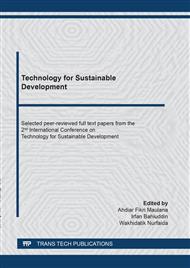p.11
p.17
p.23
p.33
p.43
p.49
p.59
p.65
p.75
Evaluation of Urban Drainage System as a Flood Control in Klitren Urban Village
Abstract:
Flooding that often happens during the rainy season in Klitren urban village is caused by reducing open space as water catchment areas [1]. It happens due to several factors, including a large amount of land that has been converted into residential areas and unsustainable existing drainage systems. To evaluate the amount of runoff produced by the area, the writer conducted a simulation using EPA SWMM 5.1 software. The simulation is conducted to compare how much runoff is generated by the area and how much water is collected according to the drainage system's capacity. Modeling alternatives used including the existing condition and other alternatives such as implementing green infrastructure installations. From the results of the analysis conducted in the study location, the runoff decreased from 3,09 m3/s to 2,92 m3/s, and the runoff decreased by 5,5%. Then, it can be used as a reference for implementing green infrastructure in urban areas.
Info:
Periodical:
Pages:
43-48
Citation:
Online since:
April 2022
Authors:
Keywords:
Price:
Сopyright:
© 2022 Trans Tech Publications Ltd. All Rights Reserved
Share:
Citation:


